Heavy Gear is the game series I have the most feelings for, ever since seeing a print ad in White Wolf Inphobia magazine (1995 – oh cool, a mere 29 years ago! I’m not old). It showed a charging, bright yellow mecha in a dense jungle. I had never seen giant robot design like it, and I’ve been a mecha fan ever since.
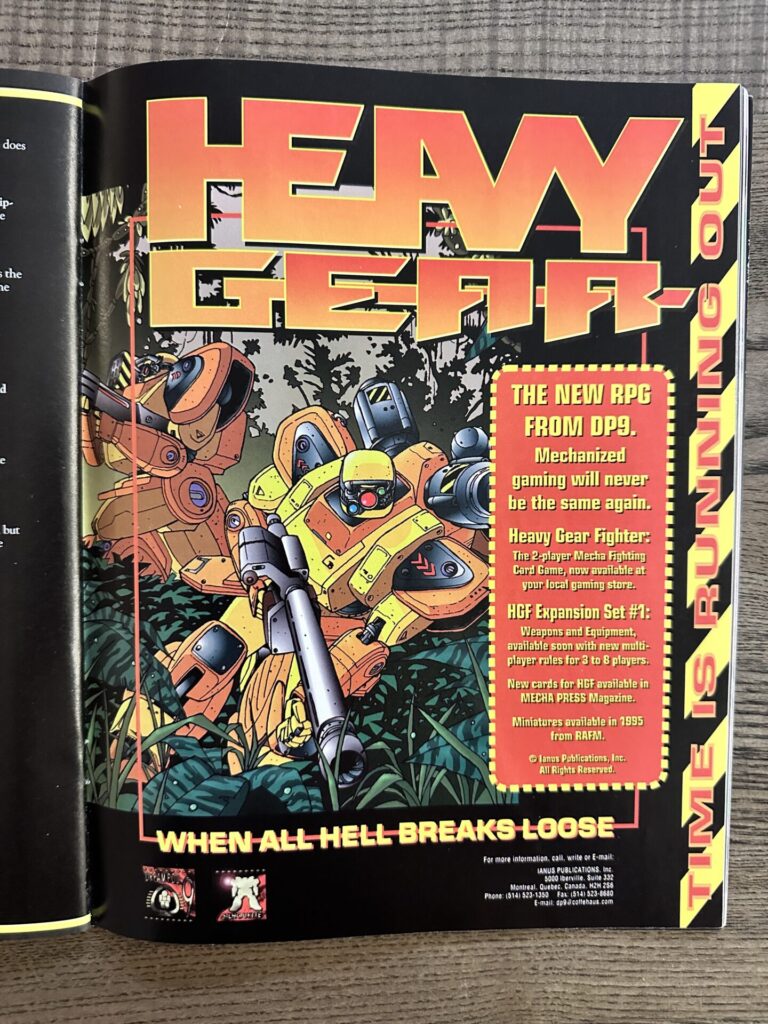
I got the first edition Heavy Gear roleplaying game as soon as it was out and I was able to afford it. I was 16 and in art high school at the time – had to balance between tobacco, beer, and games.
The first edition is polished, looks amazing, and is low on content. While the Heavy Gear world is deep and nuanced, the first book had none of that, and merely hinted at a world to play in. The design attempts to serve both wargamers and roleplayers, apparently going after the Battletech audience. We played it, but more than that, I collected the books, and daydreamed about playing it.
This was a weird phase in my roleplaying – I was intimidated by most games, feeling like I wouldn’t know how to play them “right”, and ended up running few games. It is tough for me to see, now, decades later, what that was all about. Perhaps I was taking the games too seriously, imbuing them with a gravity they never really had. Perhaps I just gave them too much space in my head. Perhaps it was paralysis by escapism options. But Heavy Gear had this effect on me in spades, and while I was so very intrigued and so into it, we never played it much!
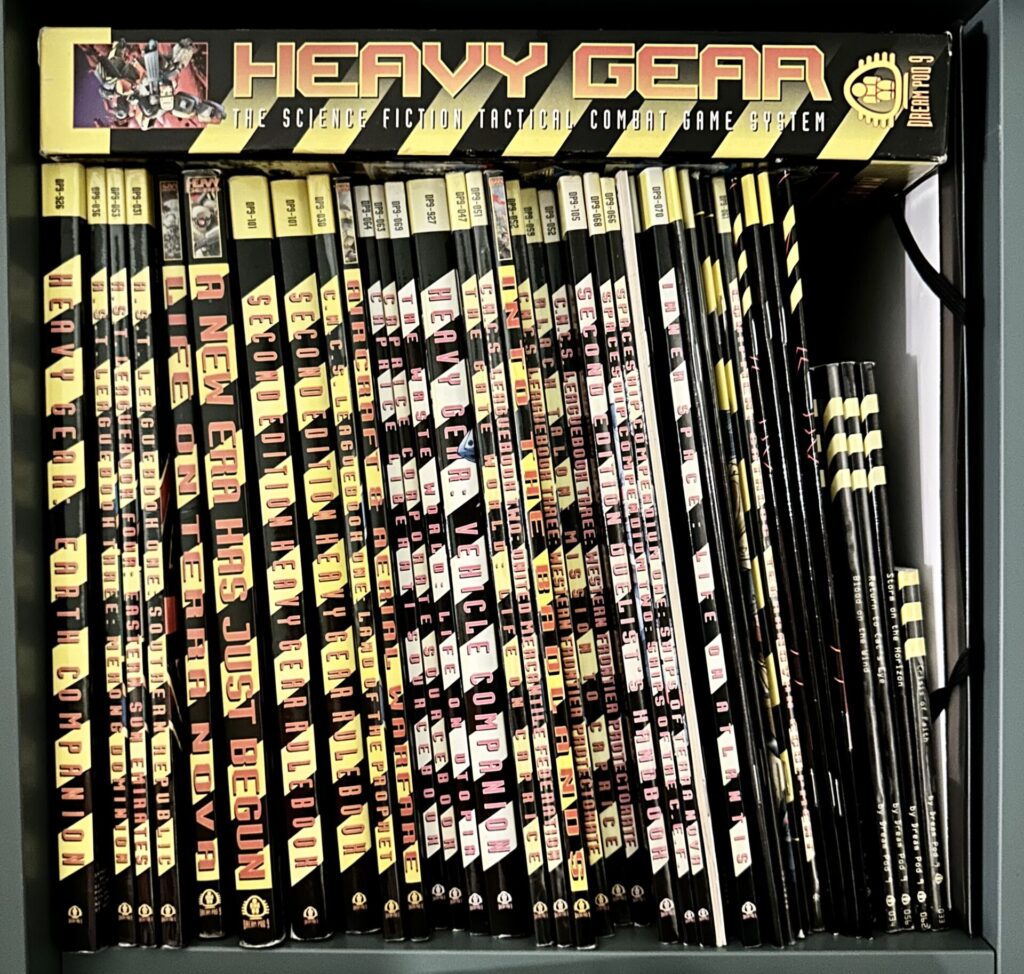
To this day, my Heavy Gear collection takes up the most space on my RPG shelves. Something about the world’s cohesion really speaks to me – these characters and their world breathe and move in a way that makes sense. It’s an unusually complete game world and design.
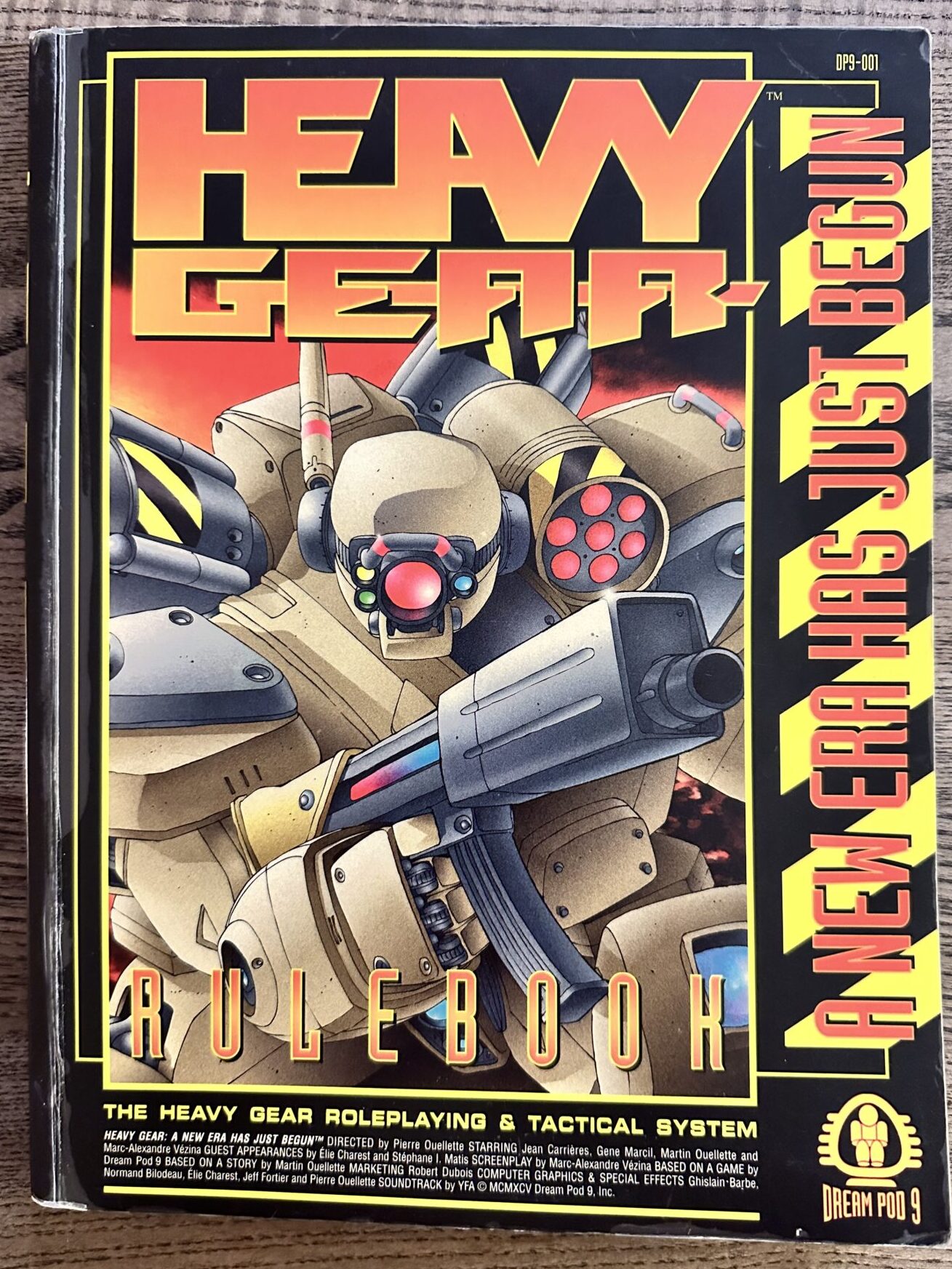
The second edition (1997) cleaned up some of the jank, but not that much, really. The rulebook itself is more usable – it includes a world to play in, for one – but the rules are fully compatible with the first edition (that is, not really improved). This is the most loved version of the game.
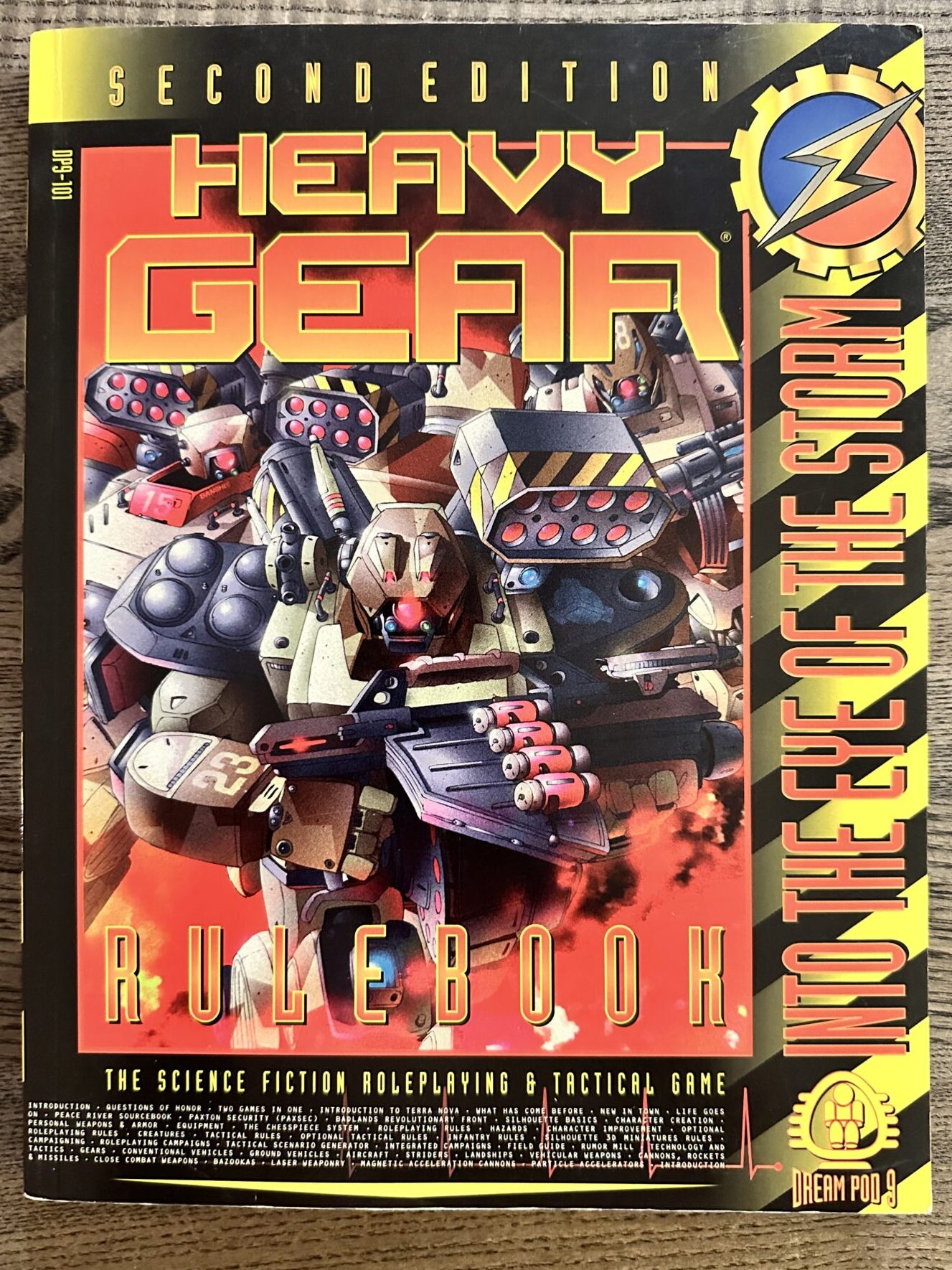
A neat detail was the timeline which started from the first edition rulebook and advanced with most major releases from a cold war into a full blown polar war, (another) invasion of the world Terra Nova by Earth forces, and beyond. The new edition is set in TN 1954, over two Terra Novan decades beyond the first edition. As a long-time fan, I am excited about all the changes to the world from the original setup. This sort of meta story is frowned upon by many roleplayers nowadays, and especially the way White Wolf did it is generally not seen as a good thing: it only leaves bit parts for the player characters. The game’s story is happening to them, not by them. I loved it in Heavy Gear, but perhaps, again, that had a lot to do with my reluctance to actually run the game. It does put some serious gates around your sandbox.
There was a third edition (2003), which changed the rules considerably, requiring the standalone release of the SilCore rules to play. SilCore was based on the Silhouette system used in the previous games, spun into a supposedly genre agnostic setup. I never got into it. A d20 version was launched, as with all major game lines at the time. Slowly, there were no more releases in what was once a really well supported game line. (I could write about DP9’s other game lines, too – I have a particular fondness for Jovian Chronicles, their Gundam alike.) Dream Pod 9 then focused on the Heavy Gear miniatures, which are now its main line of business.
I tried to go back to the second edition rules a number of times, but the weight of a 90s simulationist system was too much to bear, coming off of story games. Characters are collections of numbers that don’t mean anything. It’s a lot of math for very little gain.
I wrote my own Fate hack of the game, which we played some, but ultimately I was left with a desire to return to the “proper” experience for my Heavy Gear roleplaying.
Heavy Gear Blitz
I got into Heavy Gear Blitz, the most recent version of their miniatures rules, and found the rules modern and good. I’ve been buying miniatures and building terrain to depict Terra Nova since.
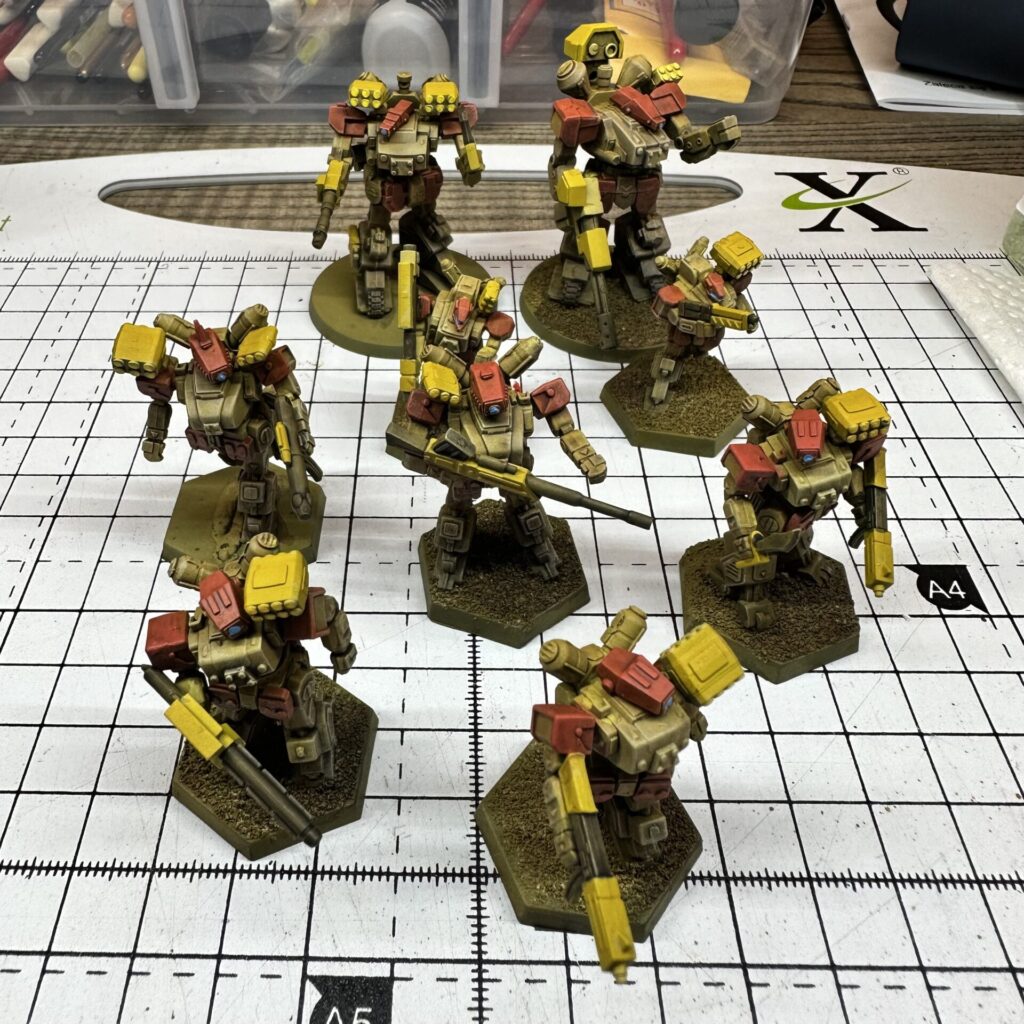
Fourth edition is here
Now, in 2024, the fourth edition of the roleplaying game is here.
What I expected: a somewhat streamlined version of Silhouette, the second edition system, using the iterated dice mechanics from Blitz, a shorter skill list, and less math in character generation. Stretch goal: less, more meaningful attributes.
The fourth edition is indeed recognizably Silhouette in the dice mechanics, which are identical to Blitz, which is a good thing. Character creation is a major deviation from the original – a lot of is interesting, but some of it fits poorly together. Luckily, the most odd parts are optional and can be just left out.
Rolling dice
Mechanics follow Blitz’s example. You roll D6s, only the highest die counts, but other dice can add +1 to it if they also beat the target number. So rolling 3, 4, 5 against 4 would be 6, and a margin of success of 2. A typical dice pool is 3D6 against a target number of 5.
Modifiers add or substract dice, but rarely more than 1-2 per roll. Most positive and negative modifiers cancel each other.
There is an emphasis on failing forward, and degrees of success and failure. It is recommended that rolling even two under the target number still counts as a success – it just comes with a substantial cost. I like this a lot – it’s the sort of modern thing you take for granted now, and probably would play it that way anyway, but it’s good to see it outlined in the text.
Characters
Everything leading up those wholly expected mechanics is not at all expected. Character generation is essentially entirely freeform, with player defined skills, and no numerical attributes at all.
There is a bit of math in skill assignment (you need to buy skill levels one at a time, so a level two skill costs three points to acquire, and a level three is six points) as the output of the skill system is effectively identical to the old system – you need a roughly comparable skill point total.
Most of your character’s defining traits are descriptive words and sentences that you come up with on your own – what’s a word or sentence to describe your origin? Profession? Motivation? They will then add dice to tasks where they might be a boon, and substract dice (and award XP) when they would be detrimental.
Used positive traits become exhausted, and need to be refreshed by using a negative trait (also granting XP). It reads like a good system, fueling dramatic color, while giving a lot of agency to the players. I am interested to see how it plays! This is modern, and the sort of kick I did not expect to see, revisiting Silhouette from the 90s.
The freeform traits and tapping them feels like a direct descendant of Fate’s Aspects. I am okay with that as I’m a fan of that system.
The skill approach is a little weird. Each skill needs to be defined by the player, but they do belong to “skill domains”, which are relatively narrow groups (20 total) that could function as the entire skill system on their own. The point is that by defining the actual skill under the “gunnery” family on your own, you end up with more colorful skills that say something about the character. There is a skill list to act as an example, but you’re not supposed to use it as-is. I find it likely that most groups will use it as-is, though, and that means there are a ton of skills – about 150.
The way the freely definable skills are supposed to be limited to maintain game balance means that they’re not that freeform, after all – under Gunnery you’re expected to put the equivalents of “small arms”, “heavy weapons”, and “heavy gear weapons”. If you introduce limits that strict, I’m not sure what you’re gaining by saying you want players to imagine… something else.
Anyway, focusing on a skill domain with multiple skills unlocks domain expertise, which is a fun way to focus character advancement and build in mechanical mini goals; you get re-rolls and other benefits as a reward.
There is an optional archetype (class) system which brings quite a bit more mechanical structure to characters, complete with pre-written & designed powers (rules), many of which add complete sub systems like character specific action economies. It feels like a completely different version of these rules, and the contrast with the freeform core of the characters is substantial. Essentially a different game, with entirely different mental expectations of players, turning combat into a tactical exercise emphasizing player skill and choice. I am not at all sure I want to use this, thus I’m glad it’s optional.
The perk/flaw system (collectively called attributes) is very old school, and I’m not sure how well it fits here. You do get mechanical options for finetuning your character, but the way these can overlap with your freely defined and mechanically flexible aspects feels awkward. I can see they’re a way to have the outcomes of a stat system without the cost of having to define all those mostly inconsequential numbers. So instead of coming to the conclusion that most of your stats are “average” and thus don’t really affect the game in any way, you just pick the 1-3 exceptions to that. That is smart, but clumsily tied to the past.
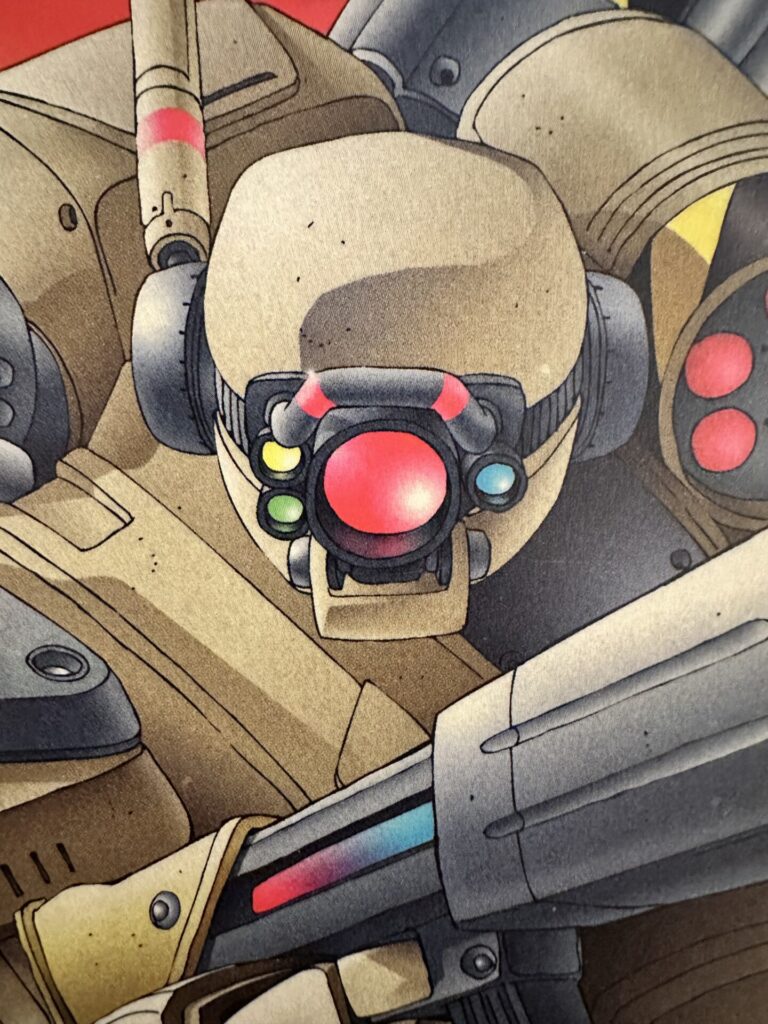
Damage
Damage is one of the worst offenders in the original Silhouette. Most hits would be glancing (no effect) or immediately overkill due to the way damage was calculated – the margin of success on an attack was a multiplier. It did result in dramatic fights, but too often it proved frustrating in practice. This was fixed in Blitz to be simple addition instead, keeping the results more predictable.
Translating the damage mechanic from Blitz to the roleplaying game, it has, again, a lot of similarity with Fate. Every time you take damage, the GM should think about the in-fiction effects of the damage, and split it into physical and mental hardships. So being shot for three damage might result in bleeding -2D6 (system shock) and startled -1D6 (shell shock). These symptoms then affect the rolls they should affect in the fiction – not as aggregate, but by context. Or you could just settle for shot in the gut -3D6 (shell shock).
There’s a good list of possible results to choose from, complete with how they might deteriorate if left untreated, and mitigation options, but you’re encouraged to make up results according to what’s going on at the table. There’s an optional system for randomizing the results based on severity of the attack. The mitigation follows fiction logic, so some effects can be overcome with a firm shake of the head, while others will need weeks of healing. This reads like a well tested design, but I wonder if it would’ve benefited from a little more structure, for example the way harm is tiered in Fate.
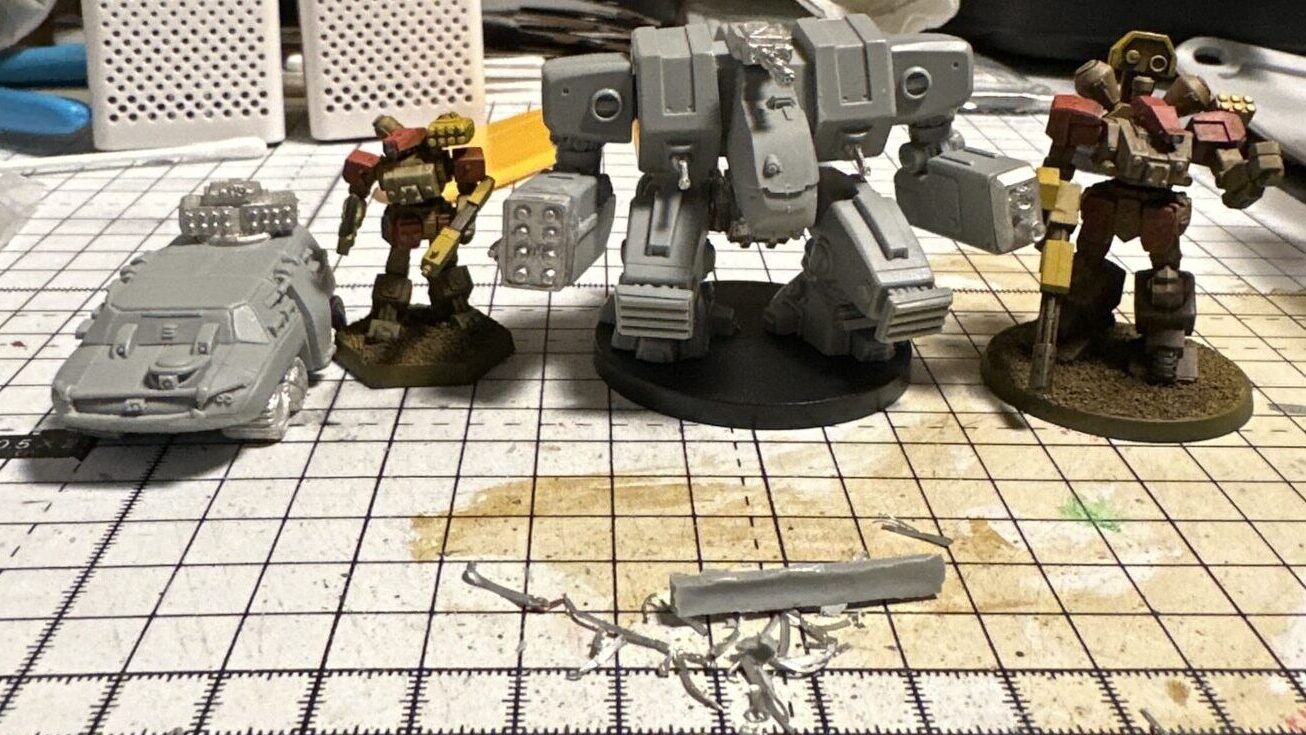
Play structure
Stories are presented as military operations, this being a game centered around mecha. There is a meta game mechanic for moving the game along: the players may at any point “request a nav point”, and the GM will tell them where they can go to advance the plot.
At the end of every session there should be an intermission sequence for downtime activities, but one can also be called by the GM mid-session. This has a clear structure with a list of possible actions and their mechanical effects – not freeform at all. If the game situation doesn’t allow for downtime – due to the game being cut in the middle of a firefight, for example – players can still advance skills and heal to a degree.
The players should begin play by creating their team (party) together. The book comes with a number of possible setups that would allow them to have giant military machines at their disposal. Choosing a shared sponsor, the type of logistics that supplies them, and developing their priority level with their sponsor, all feels like a good setup for an ongoing game.
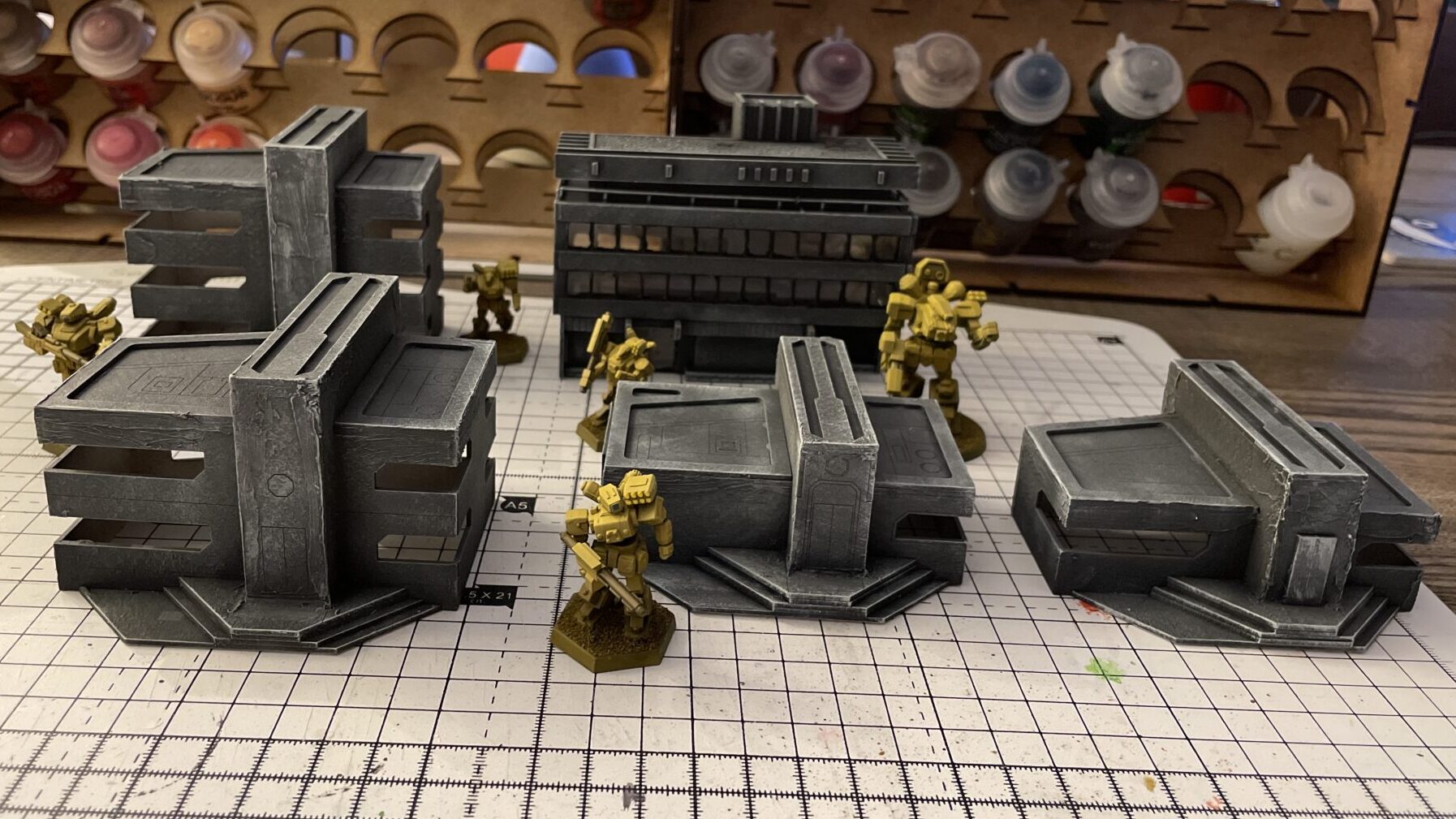
Gear
The shopping lists are otherwise standard fare, except for compact but adaptable rules for modifying everything. I appreciate the rules on buying export and salvaged versions of military hardware – it gives more options for players, and provides color to what could otherwise be a very sterile pastime.
Pet peeve: not (nearly) all weapons and armor come illustrated. I’m okay with that as I have dozens of existing Heavy Gear books to consult, but I wouldn’t be as happy as a new player. To be fair, Terra Novan technology isn’t very exotic (a rifle is a rifle), but you can tell a story with how everything looks, and the original game’s designs do hold up.
The vehicle lists are extensive, taking up the bulk of the book to cover not just North and South, but all the fighting forces you might expect to encounter in the setting. It is great to see that I can just pick a vehicle from (what I can tell without cross referencing) any of my existing books and have stats that will work for it. There are simple conversion rules, too, if you need to base something off old edition numbers.
Layout in this section that is admittedly challenging in terms of information design is rudimentary, if serviceable, and I feel the original pioneering visuals go to horrible waste, crammed into such compact listings and thumbnail size images. I would’ve massively preferred big “hero” images for all Gears (yes, like the old books), and this feels like an odd way to go about it. Again, I have a lot of the old books that can fill this need for visual appeal, but it is a shame for new players, who will miss out on the wow factor of the mecha designs.
Combat
The conflict rules are basically just Heavy Gear Blitz. That’s not a bad thing, but it is a full wargame, and you might not want that at your table. The RPG rules feel sufficient for handling anything short of mecha combat, but as soon as giant robots come out, I would just move to the Blitz rules. If you don’t, you’ll be missing out on movement, electronic warfare, indirect fire, forward observation, and reactions – all tasty stuff on the tabletop, but also things that require mental capacity, learning, and time to process.
My plan is to introduce new players to Blitz first so they’ll be mentally prepared when the miniatures come out during the roleplaying game. Unsure about using the full rules with electronic warfare and reactions, though.
I realize all that comes with the massive caveat of having miniatures and terrain available to be an option in the first place.
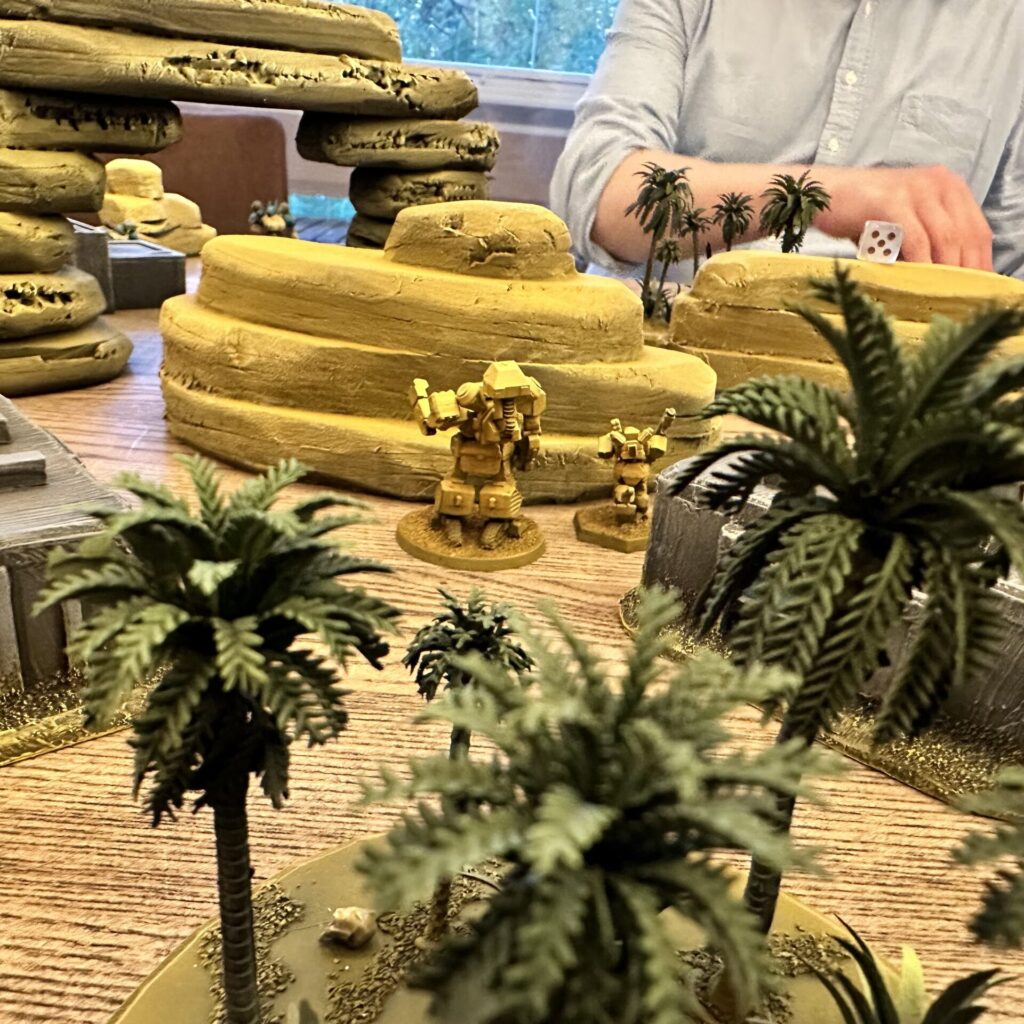
Closing thoughts
I am excited to run this new edition, because I am excited to return to Terra Nova to tell stories in that world with my table. I am curious to try these rules, but some of it feels very clumsy – it’s a case of adding new thinking on top of what is a very old base, and the seams are plain to see.
I expect it will work, but it will also feel like a game that gets in the way a bit, and is something you learn to work with if you love the content at your table – not something you want to play because it’s great in itself. It’s quirky in the way old RPGs often are: the design is not very cohesive and bits stick out. I’m not sure if they wouldn’t have been better off just bringing these dice mechanics over to the old Silhouette. (And I’m tempted to try doing that myself to see how that feels.)
I am not excited by these systems. They read like they’re in need of a new edition, like it’s the compilation volume of a decade of added rules on an old system. Not a great look when you’re the new edition. Still: I think it will work, whereas I could not make the second edition work anymore.
Another way of looking at it is that this is a way to add roleplaying to your Heavy Gear Blitz miniatures games. As that, it’s a surprisingly hefty tome with a lot of weight (not necessarily depth), considering how streamlined Blitz is, despite all its mechanical complexity and depth.
While the care and love for the material is obvious, and this is thorough work attempting to and largely succeeding in encompassing everything that has come before, while updating it all for modern sensibilities, there is an obvious need for much tighter editing. Much of the text is needlessly difficult to follow, and simple systems are difficult to decipher on the page. Typos and poorly organized text are the norm.
Art quality is varying, and whereas earlier Heavy Gear has been extremely consistent visually, this is all over the place in art direction. It feels like even the great art – of which there is plenty, largely recycled from earlier editions – is going to waste as it’s presented poorly.
I am glad Heavy Gear is back. A line of adventures is about to be released, and I’m eager to see how they play.
Leave a Reply